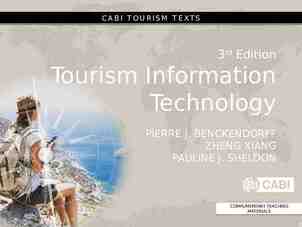Willow Springs Emily Critchfield Erin Junowich Alexis Butterworth
11 Slides7.13 MB
Willow Springs Emily Critchfield Erin Junowich Alexis Butterworth Allen Ly Nick Daddow
Park History History of Artesian Flowing Springs 90 Years of Oil Production Longview Point Coastal Sage Scrub (CSS) Willow Springs Wetland Restoration Project
Introduction Current Land Use: Oil extraction, concrete recycling, agriculture, stormwater detention, and recreation Restoration: Coastal Sage Scrub Threats: Human development and invasive species Purpose: To determine if restoration efforts have been successful so far
Significance Threatened species depend upon CSS habitat CSS is disappearing all over the CA coast Largest Park to open since El Dorado Park This park is also an asset to the community
Baseline Study Willow Springs Wetland Restoration Project Comprised of 12 acres, improve accessibility from east and west side of 47 acre park Outdoor Classroom Site Restore CSS and determine what CSS are effectively growing Create system of bioswales and ponding area Increase water quality Species Present
Methods Transecting Longview Point Field collection Ten 10m Transects of CSS GPS Coordinates Data analysis Alpha Diversity
Results Diversity Longview Point α:15 Species Count Asclepias fascicularis 2 Ceanothus cuneatus 1 Dirt 36 Encelia californica 18 Eriogonum fasciculatum 12 Heteromeles arbutifolia 12 Hirschfeldia incana 1 Keckiella cordifolia 1 Malosma laurina 1 Mirabilis laevis 1 Ribes ayreum 1 Salix lasiolepis 1 Salvia apiana 2 Salvia leucophylla 8 Sambucus nigra 4 Schinus molle 9 𝞪 15
Common Species in Longview Point Asclepias fascicularis Ceanothus cuneatus * Salvia leucophylla Sambucus nigra Encelia californica Schinus molle * Eriogonum fasciculatum Salvia apiana Heteromeles arbutifolia Malosma laurina
City Contribution City was awarded a 924,000 state grant Urban Greening for Sustainable Communities Program Grant The city’s budget designates 350,000 in one-time revenues as matching funds 50,000 technical assistant grant from the Southern California Association of Governments to create a Habitat Creation Plan 15,000 grant from the Long Beach Navy Memorial Heritage Association for a signage program to interpret the history
Discussion Willow Springs is an active restoration zone that is maintained, more or less guaranteeing the success of the various CSS species. Most vegetation species present are deliberate and systematic plantings. The current ecosystem is dependant on rainfall for its water supply. Removal of non-native and invasive species is being implemented, providing a changing population.
Conclusion By performing a baseline study we are providing data that can be referenced by future geographers. Successful restoration so far As the restoration zone expands, additional studies need to be conducted so eventually beta and gamma tests can be done. By documenting the progress and success of the restoration project we can hopefully spread awareness. Need to perform multiple transects throughout
















